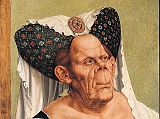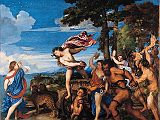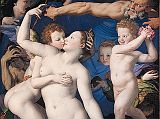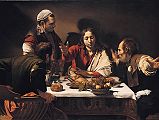




London National Gallery Top 20 10 Bronzino - An Allegory with Venus and Cupid [11 of 21]
(Agnolo) Bronzino – An Allegory with Venus and Cupid, 1540-50, 146 x 116 cm. Love is no more than transitory. Venus, the goddess of love and beauty, identified by the golden apple given to her by Paris and by her doves, has drawn Cupid’s arrow. Love is accompanied by Jealousy in the shape of the howling figure pulling his hair out at the centre left. Deceit is the young girl looking out with a falsely innocent air behind the boy holding the roses, with her hands wrong way around holding a sweet honeycomb and a scorpion. Foolish pleasure, the laughing child with an anklet of bells, throws rose petals at them, heedless of the thorn piercing his right foot. Only Folly, represented by a woman’s face in the top left-hand corner, attempts to screen the eyes of Saturn, the god of Time. Saturn tears her curtain aside with a powerful thrust of his arm, his hourglass warning of ending and death.





